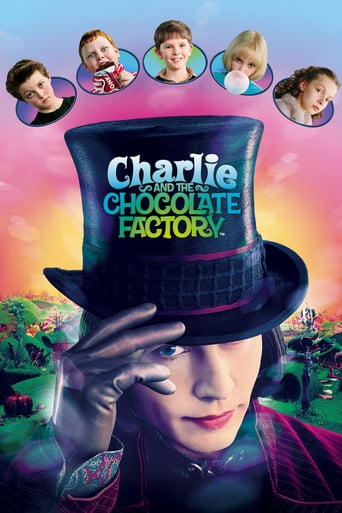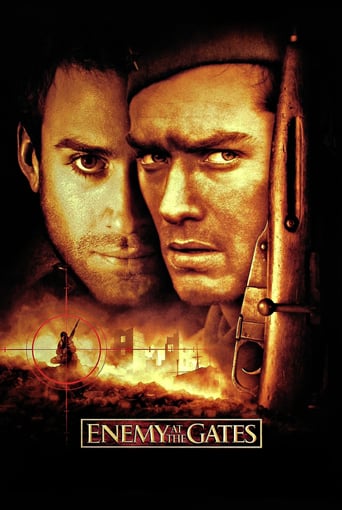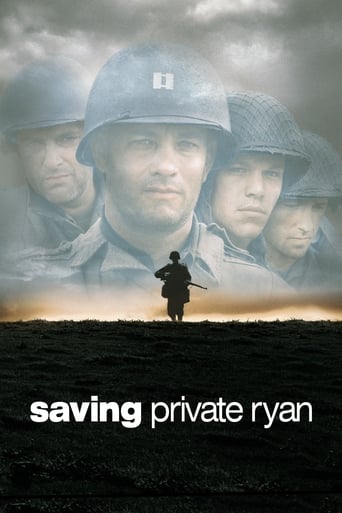
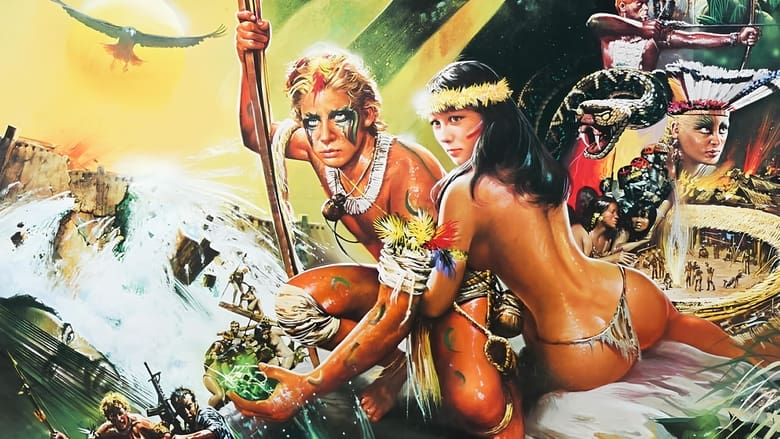
The Emerald Forest (1985)
For ten years, engineer Bill Markham has searched tirelessly for his son Tommy who disappeared from the edge of the Brazilian rainforest. Miraculously, he finds the boy living among the reclusive Amazon tribe who adopted him. And that's when Bill's adventure truly begins. For his son is now a grown tribesman who moves skillfully through this beautiful-but-dangerous terrain, fearful only of those who would exploit it. And as Bill attempts to "rescue" him from the savagery of the untamed jungle, Tommy challenges Bill's idea of true civilization and his notions about who needs rescuing.
Watch Trailer
Cast
Similar titles
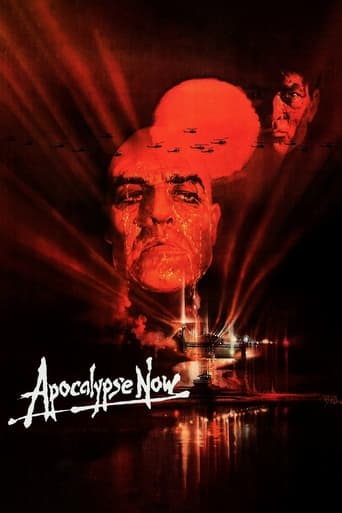

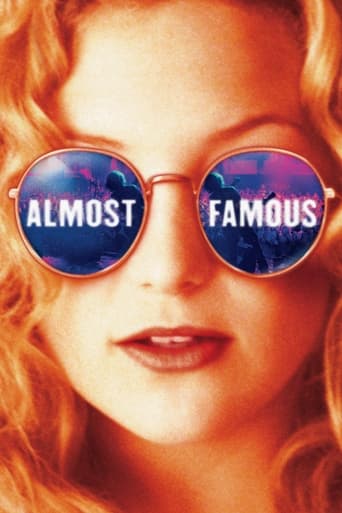
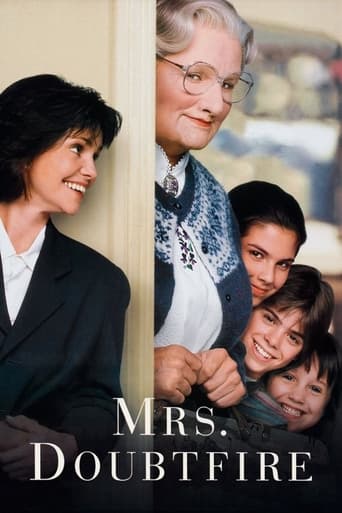

Reviews
Why so much hype?
Pretty Good
Fresh and Exciting
A film with more than the usual spoiler issues. Talking about it in any detail feels akin to handing you a gift-wrapped present and saying, "I hope you like it -- It's a thriller about a diabolical secret experiment."
Pelo amor de deus, this movie is certainly one of the most racist and ethnocentric movies ever made. Hard to believe that it is from 1985 and not 1885. Boorman illustrated the average white "civilized" persons imagination of "primitive" tribes who by and large behave like a bunch of monkeys. Or, worse than that, cannibalistic monkeys who disguise like African zombies from another white mans fantasy. The acting is so poor and clumsy that it is almost comical, and, worst of all, the fake "Indian" language is just a slightly distorted English with even the exact same amount of syllables as the English sentence would have. This movie so utterly ridiculous - and discriminatory - that its stupid colonialist disdainfulness towards indigenous people almost completely destroys its somewhat ecological message.
A definite source for The Emerald Forest is the book, Wizard of the Upper Amazon, by F. Bruce Lamb. The story is a second hand account of Manuel Cordova's kidnapping when he was a teenager working for rubber cutters in the Amazon in the early 1900s. He was taken by a group of Indians to a very remote, primitive Indian village. These Indians were of a fierce independent disposition, and had fled into the interior because they refused to exist in the subservient situation imposed on them by the rubber barons of that time. Cordova was incorporated into their tribe and describes a life strikingly similar to the one depicted in The Emerald Forest. The similarities include the adversarial tribe, the reason The Invisible People moved further into the Jungle, and the tribal ceremony with the hallucinogenic.
They often say that facts are stranger than fiction and that movies based on true events are far more implausible and far-fetched than anything that could ever spawn from the over-imaginative minds of scriptwriters. This theory is most certainly applicable to John Boorman's "The Emerald Forest". If this movie didn't loud and proudly claim that it was inspired by a true story, literally no one would take it seriously and even now you still can't help being skeptical and assume that very large parts of the script are pure fiction. It's even a bit frustrating how the movie almost uses the true-story element as an excuse to get away with an utmost incoherent narrative and indigestible plot-twists. The movie basically exists of three large chapters. The first one is brilliant and captivatingly dramatic, and probably the main reason why I personally still can't be too harsh in general. Powers Booth always a criminally underrated actor is magnificent as a construction site engineer rising up a dam on the edge of the Brazilian rain forest. His 7-year-old son is taken by a primitive tribe of Indians and for the next ten years and whilst carrying on his work as well he searches through the forest for a trace. He goes on risky expeditions and seeks contact with dangerous tribes, which leads him deep into the jungle where he's finally reunited with Tommy. The tone and concept of "The Emerald Forest" then suddenly drastically change, as the discovery of the meanwhile adolescent Tommy leads to a rather irksome plot reminiscent to "The Jungle Book" and "A Man Called Horse". The boy integrated with the people, became intimate with nature, learned the language and found a girl, so even though he remembers his father, he's unwilling to return to the so-called civilized world. During the last and most disappointing chapter of the film, father and estranged son even join forces to assure the survival of the tribe and the conservation of the rain forest. I realize John Boorman's rudimentary intention was to spread moral values and to make viewers aware of mankind's continuous destruction of nature, but nonetheless the final half hour feels too fantasy-like. For example, it's rather hypocrite to play the "true story" card but then simultaneously suggest that a gathering of croaking frogs can bring down a gigantic dam. One thing I cannot possibly deny and don't even want to, for that matter is that "The Emerald Forest" is a ravishingly beautiful movie to look at. The authentic Brazilian filming locations are breath-taking and especially during the middle-section it feels as if you're watching a collage of postcard images or a National Geographic best-of compilation. The strong opening, the wondrous scenery and Powers Booth's strong performance are definitely what save this film from mediocrity.
I like to watch in pairs, and this was paired with Herzog's "Green Ants Dream."The central character here is a teen, played by the director's son, who is kidnapped by Amazonian Indians at six and raised in nature. There are threats, adventures, encounters with "civilization." They provide the focus of the energy in this thing. Its all about that energy which we take from the juice of adolescence, perceive as the energy of an action movie and conflate (as we are intended to) with the natural richness of the rainforest.Its a simple trick, but by gosh it works. Why is not a mystery: the teen drive is transformed into something pure here, done so by the actresses who play the teen Indian girls, lovely, and effectively nude. In order to underscore the point, the plot has them (importantly, as a group) kidnapped into civilization as a the complement of the original kidnapping. But the purpose here is prostitution. When someone knows what they are doing and delivers the goods, its always a remarkable thing. The narrative engineering conveys the lack of engineering, and makes us desire the purity of encountering things without artifice.Conveying this notion is then mixed with a completely unrelated message about the destruction of the rainforest and its central importance to the global ecology. Its rather dishonest, this, but because its such a noble cause we let it slip. But its a shame. In their defense, the acknowledge that just being native doesn't endow goodness: there is an "evil" tribe. Part of the tragedy is not shown: natives everywhere in the world aggressively damage the environment as much as their capabilities allow.The perfect delicacy of this puts "Apocalypto" to shame. Ted's Evaluation -- 3 of 3: Worth watching.



